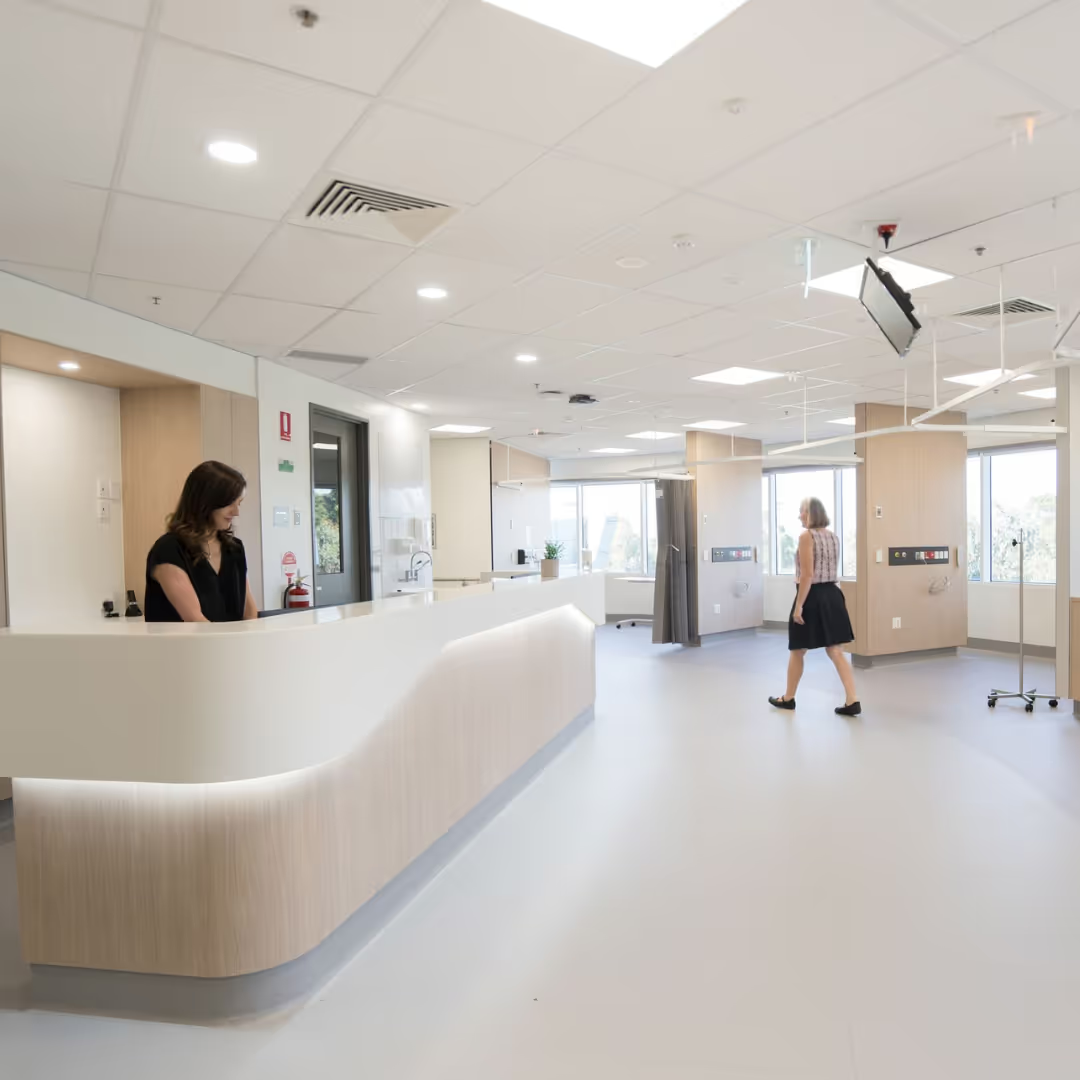Breathing new life into old spaces
Adaptive reuse in healthcare offers a practical, sustainable solution to meet growing sector demands by transforming existing buildings into high-performing clinical environments without starting from scratch.

In the face of rising construction costs, limited urban land, and growing demand across the health sector, adaptive reuse is no longer a fringe strategy. It is a practical, forward-looking solution. At HSPC Health Architects, we know that not every healthcare facility needs to begin from the ground up. Some of the most effective environments are born from reimagining what already exists.

Why Adaptive Reuse Matters
Reusing an existing structure can reduce upfront carbon emissions by up to 77 percent. This is a significant step toward meeting sustainability goals in healthcare. Adaptive reuse also enables faster delivery, reduced material waste, and often lower cost. As Australia’s ageing population grows and life sciences continue to expand, the ability to repurpose well-located but underutilised buildings becomes critical.
%20(2).avif)
What Needs to Be Considered
1. Compliance
Healthcare buildings are among the most regulated in the country. Navigating the National Construction Code, state health policies, infection control guidelines, and safety standards is complex. These factors must be addressed from the outset to avoid compromised outcomes.
2. Structure and Services
Older buildings come with limitations. Floor-to-floor heights may be tight, mechanical systems outdated, and structural grids inflexible. Retrofitting theatres, wards, or treatment areas into this fabric requires precise technical coordination and strong design strategy.
3. Clinical Functionality
Functional planning is not negotiable. Patient safety, infection control, and clean and dirty pathways must be supported by the architecture itself. Finishes alone cannot correct poor spatial logic.
4. Access and Egress
Many existing buildings lack compliant vertical transport, fire compartmentation, and accessible entry points. These issues must be resolved early in the design process, not at the end.
%20(6).avif)
Where Reuse is Working
1. Healthcare
Retail and commercial buildings are increasingly being adapted for primary care, day surgery, and outpatient services.
2. Mental Health
This sector has been a leader in adaptive reuse. Former hotels and offices offer the right scale and flexibility for therapeutic environments.
3. Aged Care
The mismatch between demand and greenfield availability makes reuse a logical strategy for aged care operators.
4. Life Sciences
Laboratory and R&D space is in high demand. Adaptive reuse allows for tailored solutions that respond to specific technical needs without long construction lead times.
%20(8).avif)
Our Approach
Adaptive reuse is a powerful way to unlock hidden value, minimise environmental impact, and fast-track project delivery, while driving smarter, more innovative models of care.
At HSPC, we start with a deep dive into the site's constraints and opportunities to assess whether reuse is viable and where value can be found. This requires significant experience to anticipate risks, surface potential issues early, and provide clear, informed advice as part of the Due Diligence process. Often working well before user groups can be consulted, we act as both designer and proxy-user, drawing on our understanding of clinical operations to assess how the facility will truly perform.
Our approach is grounded in flexible design thinking, balancing what's possible with what's practical. Targeted interventions, whether selective demolition or partial rebuild, are applied with precision to enhance performance, not dilute it.
We always lead with a clear vision of what success looks like. Because for us, adaptive reuse isn’t about making do with what's there, it’s about creating something better than ever imagined.
%20(4).avif)

.png)


